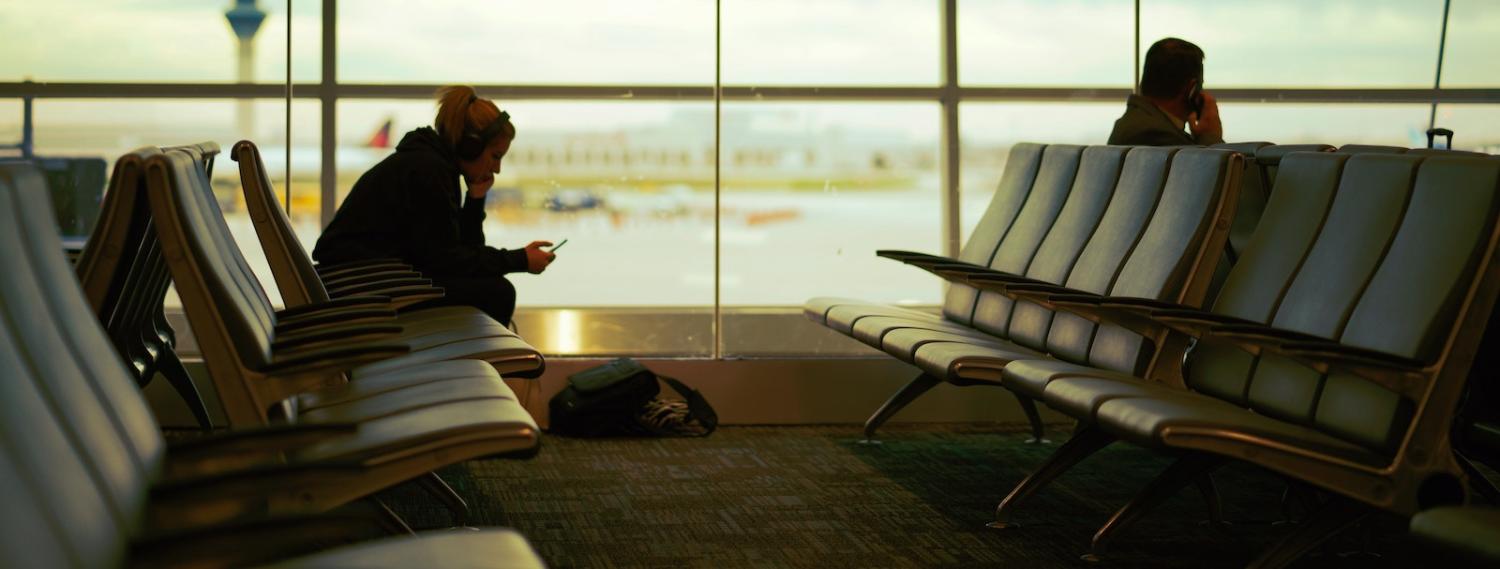The case of Saudi teen Rahaf Al-Qunun dramatically demonstrates the difficulties many refugees face when attempting to escape the risk of harm at home and find safety elsewhere – whether they travel by leaky boat, or through international airports surrounded by business travellers and holiday-makers.
Sometimes the dangers for refugees in transit are presented by the very people from whom they seek protection, as was exposed in the ABC Four Corners program broadcast on Monday, Escape from Saudi.
Australian law actually requires asylum seekers to act unlawfully if protection is what they urgently need.
The report from journalist Sophie McNeill, who will be discussing Rahaf’s case at the Kaldor Centre’s “Emergency Resettlement” event next week in Sydney, made clear that at least four young women were prevented from completing their flight in search of refuge in Australia.
For some of these women seeking asylum, problems began when their government “cancelled” their passports while they were en route. That might not have mattered, for each of them had valid Australian visas and could have continued their journey, had it not been for the reported intervention of one of Australia’s “airline liaison officers” stationed at overseas airports to monitor and control the movement of people headed our way.
According to McNeill’s report, it got worse, when with unseemly haste, Australia rushed to cancel those very visas, leaving the women stranded in transit and liable to return to the country from which they had fled. This raises serious concerns about Australia’s role in potential refoulement – the return of someone, directly or indirectly, to a country in which their life or freedom would be in danger.
Policy is to prevent arrival in Australia
For Rahaf Al-Qunun, the day was saved by Canada which, within a matter of hours offered her resettlement. Meanwhile, Australia did a slow waltz to nowhere, going through its “usual procedure”, with “no special treatment”, despite the manifest urgency, pressure, and panic in Bangkok.
It’s not that Australia can’t do it – it once had the reputation of being the fastest processor of refugees in need of resettlement. The tangle today, however, is deliberate policy. It reflects the government’s aim to prevent those seeking asylum from ever reaching Australian territory.
It may come as a surprise to many Australians that the Australian government actively implements measures to intercept and turn back would-be refugees before they board a plane to Australia, or that it also imposes economic sanctions on airlines who inadvertently allow such people to board and travel here.
Although the Australian government persistently frames those who travel by boat as “illegal” arrivals, the cases featured on Four Corners show that entering Australia “legally” may be all but impossible.
Australia is not alone in pursuing such “extra-territorial” immigration controls, and the actions of European governments in preventing people leaving Africa for European shores have become notorious.
Squaring legal obligations
These practices are sometimes justified as an attempt to prevent the alleged security threat posed to destination countries by irregular migrants. However, they are also, and perhaps primarily, a deliberate attempt by governments to circumvent refugee protection obligations under the Refugee Convention.
Under the Refugee Convention, states have specific obligations to refugees arriving at or within their borders, which includes not sending them back to where their life or freedom would be at risk (non-refoulement). By stationing its officials at crucial transit points outside Australia, the government hopes to side-step these obligations. In truth, however, Australia’s international refugee and human rights law obligations do not stop at its territorial borders. They arise wherever the government asserts its control.
The reasons for cancelling a visa usually relate to the criteria for issue. There is no specific visa for those seeking protection, so asylum seekers hoping to get to Australia have to opt for alternatives, for example, as a student, tourist, or short-term business visitor. But temporary stay is a condition of such visas, and evidence that the individual may request asylum can take them outside the criteria and lead to visa cancellation. Australian law actually requires asylum seekers to act unlawfully if protection is what they urgently need.
This is presumably what happened to Rahaf Al-Qunun, whose visa to Australia was reportedly cancelled when her story became public via social media. But hers is not an isolated case.
Doubtless, some will say that Australia’s actions, in this case, were all within the law and that if wrongs were done and harm resulted it was all someone else’s doing. But the law is a long chain, and international law has no problem attaching liability along the way.
And what, in particular, of those two Saudi women said by Four Corners to have been turned back, not in some distant foreign place, but at Sydney airport? The law says – Australian law says – that if they asked for asylum they should have been admitted to the process and given a fair go. Nothing could be clearer. So what’s going on, and who is responsible?
Professor Guy Goodwin-Gill will chair a free public panel discussion with Sophie McNeill, UNHCR Senior Protection Advisor Khanh Hoang and Kaldor Centre Senior Research Associate Dr Claire Higgins on Feb 13, “Emergency resettlement: From one Saudi teen to million of Syrian refugees”.

